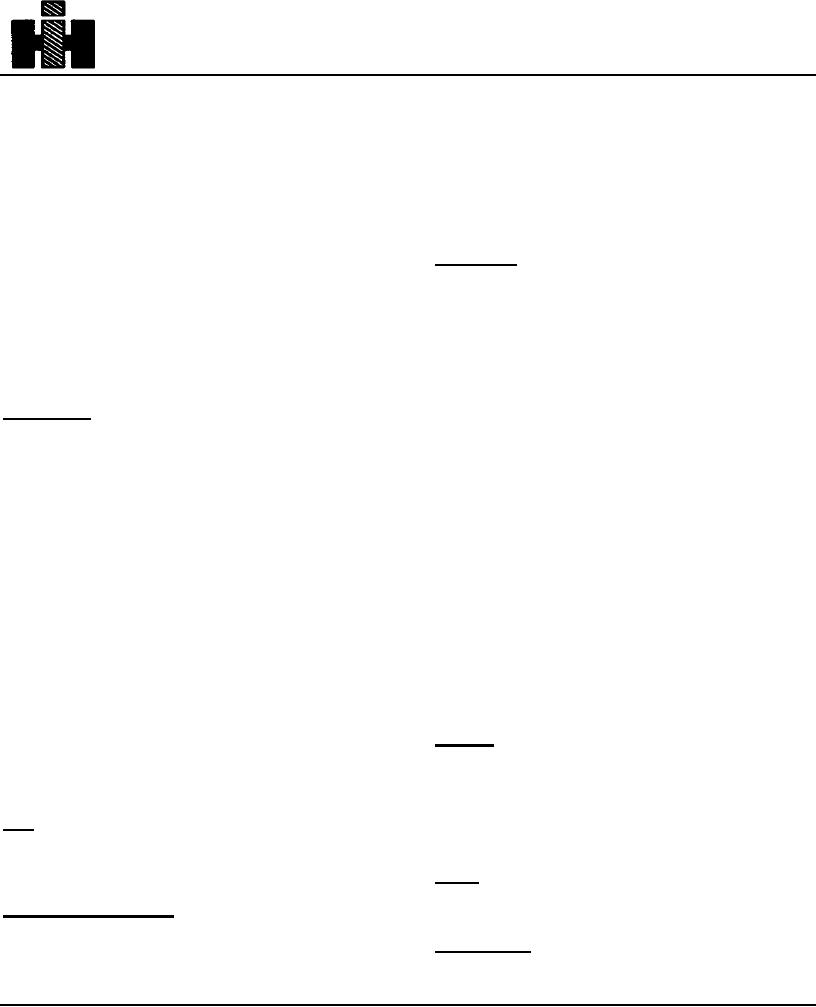
TRUCK SERVICE MANUAL
BRAKES-AIR
2. Examine the diaphragm. If any signs of damage or
the life of the diaphragm. Over travel also slows braking
deterioration are evident, replace the diaphragm. When
response.
one diaphragm requires replacement, it is good practice
to replace all of the brake chamber diaphragms in the
Every year or every 50, 000 miles the brake chambers
system while the vehicle is out of service. Brake
should be disassembled and cleaned. New diaphragms
chamber diaphragms must be replaced every 50, 000
must be installed. Be sure to use the correct diaphragm
miles or at least once a year, regardless of condition.
return springs when reassembling the chamber or
uneven braking may result.
3. Inspect push rod, spring and spring retainer. If parts.
are damaged, they should be replaced. Check return
Adjustment
springs. If a load scale is available, compare their
After the brake chamber is installed, the brakes must be
tension with new spring. Matching an old spring with a
adjusted and checks made to be sure the linkage does
new spring will indicate the condition of the old part.
not bind. Adjustment of the push rod length may be
accomplished by altering the location of the yoke.
4. Check the condition of the non-pressure plate. If the
clamping flanges on the plates are dented or damaged,
With brakes released, the angle formed by the push rod
replace the plates.
and slack adjuster must be greater than 900, and all
slack adjusters should be set at the same angle. With
Reassemble
the brakes applied, after being. adjusted, this angle
1. Install nuts (10) on mounting studs and clamp non-
should still be greater than 90. In other words, the slack
pressure plate (8) in vise with inside of plate facing up.
adjuster should not go "over center" when the brakes are
applied (Fig. 7).
2. Install spring (6) in spring retainer (5).
SLACK ADJUSTERS
3. Install push rod assembly in body, press the assembly
down (brake applied position) to compress the spring
Slack adjusters provide method of adjusting brakes to
and use vise grip pliers on the outside of the push rod to
compensate for brake lining wear, and also serve as a
hold the spring compressed.
lever during braking operation, (Fig. 20).
4. Install diaphragm (3) in pressure plate (4).
Slack adjusters were designed to conform to the
development of heavy-duty two-shoe foundation brakes.
5. Position brake chamber plates matching up etch
marks made prior to disassembly.
During brake operation, the entire slack adjuster rotates
bodily with the camshaft. When adjusting the brakes, the
6. Install clamp (7) with bolts and nuts and tighten nuts
worm moves the gear so as to change the position of the
to 150 in. lbs. torque. Remove vice grip pliers.
lever arms in relation to the brake camshaft.
7. Install lock nut (11), yoke (14), pin (13) and cotter pins
Remove
(12).
1. Remove cotter key and clevis pin from slack adjuster
and push rod clevis.
8. Assemble yoke and lock nut to push rod.
2. Remove snap ring from camshaft.
Test
To check for leaks, coat brake chamber around clamp
3. Slide slack adjuster from end of brake camshaft.
with soapsuds and apply air pressure to port in pressure
plate (4). No leakage allowed.
Install
Slack adjuster installation is the reverse procedure for
Preventive Maintenance
removal.
Every month or every 2, 000 miles the brake chamber
push rod travel should be checked. Push rod travel
Disassemble
Refer to Fig. 21 for numbers
should be kept at a minimum without brakes dragging.
in parenthesis
Excessive travel of the brake chamber push rod shortens
1. Clean all grease and dirt from the outside
192

